#queen mary of great britain
Photo
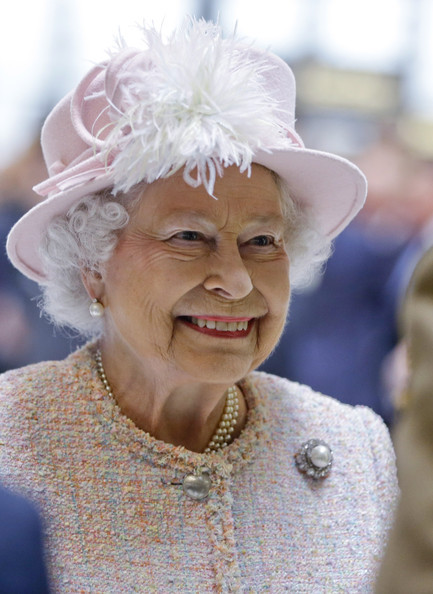
Cambridge Pearl Brooch sans Drop ♕ King Charles III
#queen elizabeth#queen elizabeth ii#queen elizabeth the queen mother#elizabeth bowes lyon#queen mary#mary of teck#great britain#british royal family#king charles#Charles III#king charles iii#royal jewels
104 notes
·
View notes
Photo

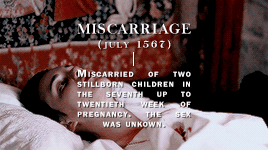
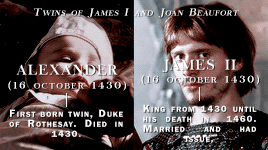


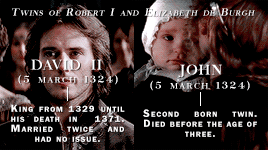


♕ Queens Regnant and Queen Consorts who had twins
#historyedit#scottish history#british history#kingdom of scotland#mary queen of scots#joan beaufort#elizabeth de burgh#anne of great britain#qr: mary i#qc: joan beaufort#qc: elizabeth de burgh#qr: anne i#women in history#house of stewart#house of bruce#house of stuart#queens regnant#queen consorts#ours#gifs
233 notes
·
View notes
Text

#King George V#Henry Duke of Gloucester#George Duke of Kent#King Edward VIII#King George VI#Queen Mary#Mary Princess Royal#portrait#1900s#colorization#Great Britain
16 notes
·
View notes
Text

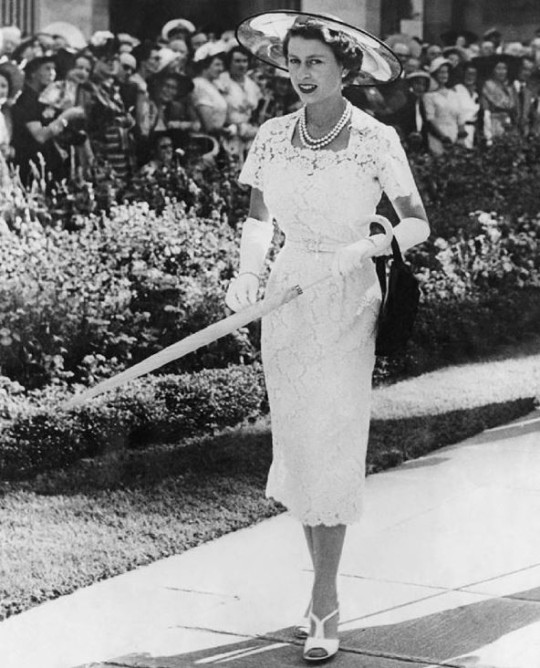
Happy 97th birthday to heaven, Your Majesty!🖤
[Elizabeth Alexandra Mary Windsor (1926-2022)]
#Elizabeth Alexandra Mary Windsor#elizabeth ii#queen#great britain#united kingdom#royal fashion#uk royalty#uk royal family#happy birthday to heaven🖤#97th birthday
19 notes
·
View notes
Text

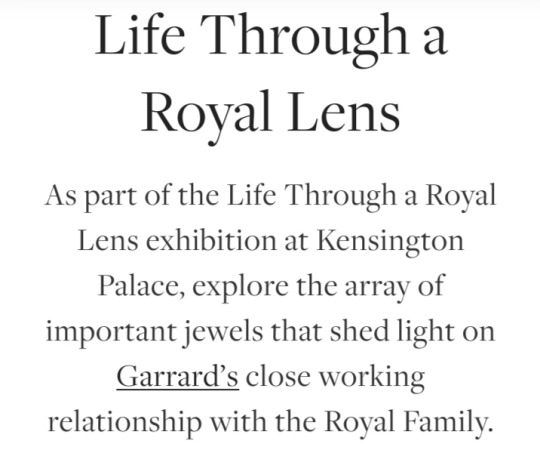
In her “accession” photographs, shot in 1952 by Dorothy Wilding, HM Queen Elizabeth II is pictured with the Girls of Great Britain and Ireland Tiara upon her head – a jewel that you might recognize because Her Majesty is seen wearing it on the front of every Bank of England banknote.
Originally the property of Queen Mary, Duchess of York, Princess of Wales and finally Queen Consort of King George V, the Girls of Great Britain and Ireland Tiara was crafted by Garrard in 1893 to be given as a wedding present from the Girls of Great Britain and Ireland committee.
Designed to be transformable, allowing it to be worn as either a necklace or coronet, over the years, Queen Mary requested that Garrard add diamonds, remove pearls, and separate the bandeau from the base so that she could wear it as a headband.
In 1947, Queen Mary gave the tiara to Princess Elizabeth as a wedding present. In 1969, now Queen Elizabeth II, she asked for the bandeau and tiara to be reunited, as it remains today.
Worn frequently by Her Late Majesty The Queen, the Girls of Great Britain and Ireland Tiara is an ongoing source of inspiration for Garrard’s designers, with the repeated pattern of diamonds encircling the base reflected in the round and geometric Windsor motif, which is a signature of the Albemarle and Fanfare jewellery collections.

The Queen’s love of brooches is legendary, and in Bob Thomas’ intimate portrait of Her Majesty at the Royal Windsor Horse Show, she is pictured wearing the Cullinan V Heart Brooch, one of several important brooches commissioned from Garrard by the Royal Family.
Showcasing the 18.80-carat heart shape Cullinan V diamond, the fifth-largest gem to be cut from the 3,106-carat Cullinan Diamond – the largest gem-quality rough diamond ever discovered – the diamond was given to Queen Mary in 1911 as a gift from the South African government.
It was originally worn by Queen Mary as part of the suite of jewellery made by Garrard for her to wear at the Delhi Durbar in 1911.
When Queen Mary died in 1953, the Cullinan V Brooch was passed to her granddaughter, Her Late Majesty Queen Elizabeth II, who was photographed wearing it throughout her reign.

The Sapphire and Diamond cluster ring worn by Catherine, Princess of Wales, formerly Duchess of Cambridge, in the 2013 portrait by her father Michael Middleton is among Garrard’s best-known creations.
Set with a magnificent 12-carat oval Ceylon sapphire, encircled by a cluster of diamonds set in 18 carat white gold, the ring was personally chosen by Lady Diana Spencer for her engagement to Prince Charles.
It became instantly famous after it was prominently showcased in an engagement shoot in 1981 that took place in the grounds of Buckingham Palace.
A new chapter in the story of Princess Diana’s engagement ring was written when, in 2010, William, Prince of Wales, formerly Duke of Cambridge, chose to propose to Catherine Middleton with the same engagement ring his father had given to Diana.
As this royal jewel, passed down through generations, takes on new meaning and sentiment upon Princess of Wales’ hand, we continue to honour this history-defining design in the 1735 collection.
Garrard’s iconic cluster setting also features prominently in the Jewelled Vault, where each one-of-a-kind creation is designed around an exceptional central stone.

A page from the scrapbook of Princess Victoria of Wales, daughter of King Edward VII and Queen Alexandra, shows photographs of Alexandra, dating from 1901, wearing a diamond crown that is much smaller than a traditional royal crown.
Crafted by Garrard in 1871 at the request of Queen Victoria, the miniature crown was designed to be worn over Queen Victoria widow’s cap.
Set with more than 1,000 diamonds and featuring alternating crosses and fleur-de-lis motifs, Garrard created the crown so that the arches could be removed.
Queen Victoria wore the Small Diamond Crown for the first time at the opening of Parliament in 1871 and frequently thereafter for state occasions.
After Queen Victoria’s death, the crown was worn by Queen Alexandra, who in turn passed it to her daughter-in-law, Queen Mary.
Today, Queen Victoria’s Small Diamond Crown is housed at the Jewel House at the Tower of London, where it is on display.
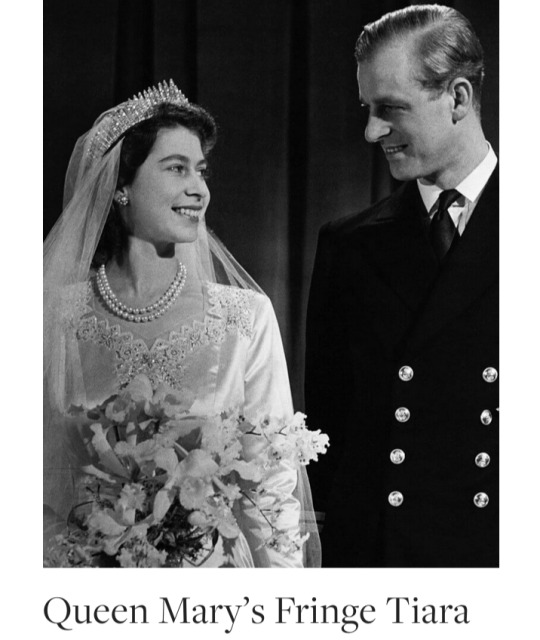
Both King George VI and HM The Queen are pictured wearing the Imperial State Crown in the Life Through a Royal Lens exhibition.
The 10th iteration of this historic jewel, the crown was crafted by Garrard in 1937 for King George VI and adjusted for The Queen ahead of her coronation in 1953.
Some of the most historic gems in the royal collection reside in this Crown Jewel, including, at the front of the crown, the Cullinan II, the second largest diamond cut from the 3,106-carat Cullinan Diamond – the largest gem-quality rough diamond ever discovered.
Above it, mounted on a diamond Maltese cross, is the Black Prince Ruby, which is not a ruby at all.
In the 16th century, it was discovered that this blood-red semi-polished stone is, in fact, a spinel, a gem that is often referred to as “the great imposter” after it was discovered that some of the most famous “rubies” seen in crown jewels around the world are, indeed, spinels.

A big moment in Garrard’s history was the recutting of the Koh-i-Noor Diamond.
This sizeable white diamond was first displayed to the public at the Great Exhibition of 1851.
In 1852, Prince Albert, who was instrumental in the creation of the Exhibition, commission Garrard to recut the diamond.
The intensely demanding cutting process lasted eight weeks and was overseen by The Duke of Wellington.
Garrard worked to create more facets to enhance its beauty; consequently, the diamond emerged as a dazzling brilliant weighing 105.6 carats.
In 1911, the Koh-i-Noor was set into Queen Mary’s Crown, newly created by Garrard for the Coronation.
Today, the fabled Koh-i-Noor Diamond (which is now only worn by a woman – if a man wears it, he will supposedly be cursed) is set at the centre of The Queen Mother’s Crown created by Garrard in 1937.

In a black-and-white photograph taken at the Delhi Durbar in 1911, held to mark the coronation of King George V and Queen Mary as Emperor and Empress of India, Queen Mary is pictured wearing the magnificent Delhi Durbar Suite.
Created by Garrard at the request of the Queen, who wanted a suite of jewels that perfectly captured the majesty of the occasion, the suite included an emerald and diamond tiara, earrings, a brooch, a stomacher, and a spectacular necklace.
Designed by Garrard in a striking circlet style, the Delhi Durbar necklace is set with eight large cabochon emeralds known collectively as the Cambridge Emeralds, with a pendant suspended beneath set with a ninth Cambridge Emerald.
In 1912, Garrard made slight alterations to the necklace, making the emerald pendant detachable and adding a second removable pendant showcasing the 8.80-carat marquise cut Cullinan VII diamond.
Queen Mary regularly wore the necklace and the other jewels in the parure for the rest of her life, after which they became the property of Her Late Majesty Queen Elizabeth II, who inherited the Delhi Durbar Necklace in 1953 and had worn it on many occasions.
The Delhi Durbar Tiara, meanwhile, was given by Her Late Majesty The Queen to Camilla, Queen Consort, after her marriage to His Majesty King Charles III.

Commissioned by Queen Mary in 1919, the Fringe Tiara was crafted by Garrard in the fashionable Russian style reminiscent of a kokoshnik and designed to be convertible so that it could be worn as either a tiara or a necklace.
Queen Mary gave the tiara to her daughter-in-law, Queen Elizabeth, later the Queen Mother, who was pictured wearing it in Cecil Beaton’s whimsical portrait.
Queen Elizabeth in turn loaned it to her daughter, Her Late Majesty Queen Elizabeth II, then Princess Elizabeth, to wear for her wedding to Philip Mountbatten in 1947 as her “something borrowed.”
In 1974, the Queen Mother loaned the Fringe tiara for another royal wedding, that of her granddaughter Princess Anne.
Most recently, it was worn by Princess Beatrice on the occasion of her wedding to Edoardo Mapelli Mozzi in 2020.

Originally created by Garrard in 1870 for Florence, Lady Poltimore, the 2nd Baron of Poltimore, the Poltimore Tiara was not publicly known until it was acquired by Princess Margaret prior to her engagement to Antony Armstrong-Jones in 1959.
Featuring elegant diamond scrolls evocative of flora – an enduring source of inspiration during the Victorian era in which it was made – it quickly became one of the Princess’s most prized possessions.
In the ensuing years, both Margaret and the towering jewel were regularly in the spotlight, including, most famously, the photograph on show as part of the Life Through a Royal Lens exhibition featuring the Princess wearing the Poltimore Tiara in the bathtub.
#Queen Elizabeth II#HM Queen Elizabeth II#Girls of Great Britain and Ireland Tiara#King George V#Queen Mary#Cullinan V Heart Brooch#Sapphire and Diamond Cluster Engagement Ring#Lady Diana Spencer#Diana Princess of Wales#Catherine Middleton#Catherine Princess of Wales#Queen Victoria#Prince Albert#Small Diamond Crown#Queen Alexandra#Imperial State Crown#Cullinan II#Black Prince Ruby#Koh-i-Noor Diamond#Great Exhibition of 1851#Delhi Durbar Suite#Cambridge Emeralds#Cullinan VII#Delhi Durbar Tiara#Fringe Tiara#Poltimore Tiara#Princess Margaret#British Royal Family#Dorothy Wilding#Tower of London
53 notes
·
View notes
Text
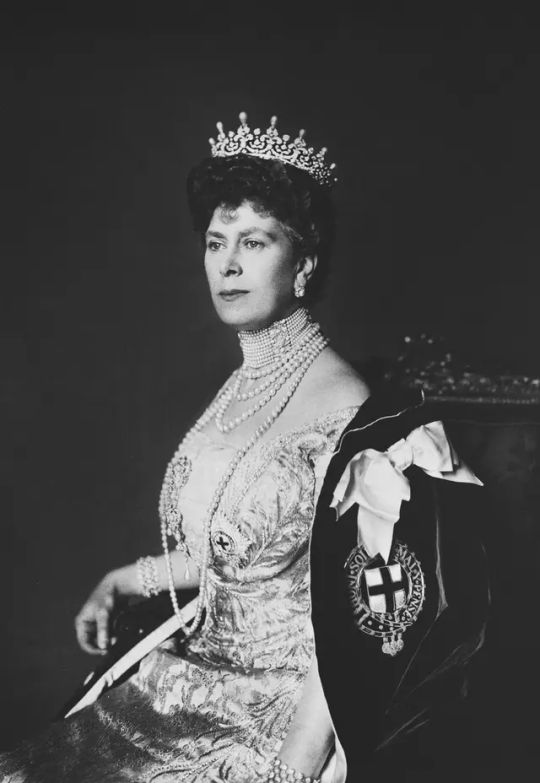
Queen Mary photographed by Grove & Boulton, 174 Brompton Road, London, 1912.
5 notes
·
View notes
Text
🏴WITCH TRIALS IN SCOTLAND- Stirling
The 250-foot- high volcanic plug on which the present castle stands was probably occupied by the early British Picts. The settlement had developed sufficiently for it to be made a royal burgh about 1130. Alexander II of Scotland granted another charter in 1226 and made the castle a royal residence.(Britannica)

🏰Both Mary Queen of Scots & James VI celebrated here baptism of their children (Mary was also mom of Infamous witchhunter James).

From Stirling Castle's you can see the National Wallace Monument on the edge of the rolling Ochil Hills before looking north east for the mountain peaks of Loch Lomond & The Trossachs National Park.


⚖️According to a Survey of Scottish Witchcraft Database Bessie Stevenson’s trial happened 3/1659 in Tolbooth - Stirling. She confessed to healing with deeds, but denied using any words. Other witch trials linked to this:
Magdalene Blair, Janet Millar, Issobell Keir, IIssobell Bennet, Margaret Harvie, James Kirk…According to Martin (2009) Total Number of Suspects in Stirling (1561–1736) was 53.
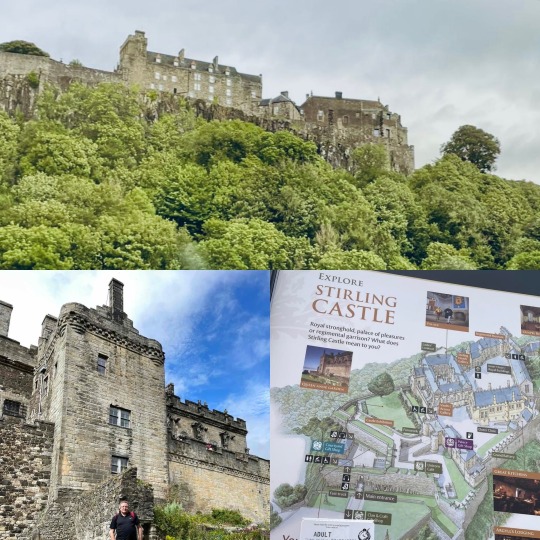
Survey of SWDB:
💦”She (Bessie) knows a blasted person, which means a bewitched person 'by the gogling of their eyes and turning hither and tither to ather side.' Washes their clothes in St. Ninian's well for healing. This will either 'end them or mend them.' She learned it from lady McFarlens daughter 24 years prior. She transfers the disease if she meets anyone on the way back from the well. Also layed two foxtree leaves under their head and middle. She cures maw turning by leading people around an oak tree three times, repeating words. For curing persons forespoken she recites words and takes some of the illness into herself. For curing heart fires she uses a belt and two threads she rolls them and if the threads are on the top and the bottom the person has heart fires.”💖

Probably older folklore believes was behind Bessie’s magic than this Christian saint (Ninian). She used magic in her healing more than any herbs. Stevenson was executed outside the city and her body was probably burned at the sight.🔥




#history#witch#witch trials#stirling castle#scotland#witchcraft#witches#william wallace#mary queen of scots#James VI#ninian#great britain#outlander#highlands#lowlands
10 notes
·
View notes
Text
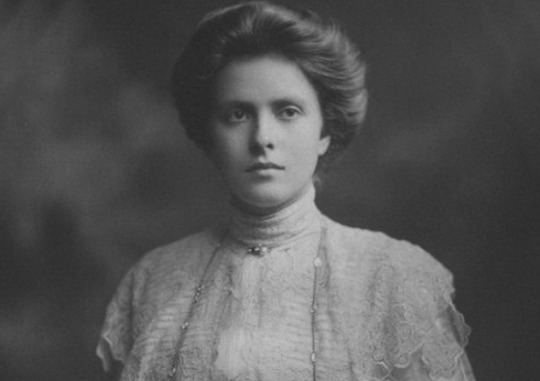
THURSDAY HERO: Princess Alice
Amazing story! Princess Alice was an unconventional royal who prioritized helping others over wealth and privilege. She devoted her life to good deeds and spiritual growth, and was notable among European royalty for taking Jews into her home during the Holocaust.
Princess Alice stood out for another reason: she was deaf from birth.
Born in 1885 at Windsor Castle, Alice was the great-granddaughter of Queen Victoria. She learned to lip read at a young age, and could speak several languages. Alice was widely regarded as the most beautiful princess in Europe.
At age 17, Alice fell in love with dashing Prince Andrew of Greece and they were married in 1903. Alice and Andrew had four daughters and a son. Their son Philip would later be married to Queen Elizabeth II. Alice communicated with her children mainly in sign language.
Political turmoil in Greece forced the royal family into exile. They settled in a sleepy suburb of Paris, where Alice threw herself into charitable work helping Greek refugees. Her husband left her for a life of gambling and debauchery in Monte Carlo.
Relying on the charity of wealthy relatives, Alice found strength in her Greek Orthodox faith. She became increasingly religious, and believed that she was receiving divine messages and had healing powers. She yearned to share her faith and mystical experiences with others, but instead was dismissed as mentally unhinged.
Alice had a nervous breakdown in 1930. She was committed against her will to a mental institution in Switzerland, with a dubious diagnosis of schizophrenia. Alice did not even get a chance to say goodbye to her children. Her youngest, 9 year old Philip, returned from a picnic to find his mother gone.
Alice tried desperately to leave the asylum, but was kept prisoner in Switzerland for 2 1/2 years. During that time, her beloved son Philip was sent to live with relatives, and her four daughters married German princes. Alice was not allowed to attend any of their weddings.
Finally, in 1932, Alice was released. She became a wanderer, traveling through Europe by herself, staying with relatives or at bed & breakfast inns. In 1935, Alice returned to Greece, where she lived alone in a modest two bedroom apartment and worked with the poor.
The Germans occupied Athens in April 1941. Alice devoted herself to relieving the tremendous suffering in her country. She worked for the Red Cross, organizing soup kitchens and creating shelters for orphaned children. Alice also started a nursing service to provide health care to the poorest Athenians.
In 1943, the Germans started deporting the Jews of Athens to concentration camps. Alice hid a Jewish widow, Rachel Cohen, and her children in her own apartment for over a year. Rachel’s late husband, Haimaki Cohen, was an advisor to King George I of Greece, and Alice considered it her solemn duty to save the remaining Cohen family.
Alice lived yards from Gestapo headquarters. When the Germans became suspicious of her and started asking questions, she used her deafness as an excuse not to answer them. Alice kept the Cohen family safe until Greece was liberated in 1944.
After the war, Alice founded her own religious order, the Christian Sisterhood of Martha and Mary, and became a nun. She built a convent and orphanage in a poverty-stricken part of Athens. Alice dressed in a nun’s habit consisting of a drab gray robe, white wimple, cord and rosary beads – but still enjoyed smoking and playing cards.
In 1967, after a Greek military coup, Alice finally returned to Great Britain. She lived at Buckingham Palace with her son Philip and daughter-in-law, Queen Elizabeth II.
Alice died in 1969. She owned no possessions, having given everything to the poor. Before she died, Alice expressed a desire to be buried at the Convent of Saint Mary Magdalene on the Mount of Olives in Jerusalem, but instead was laid to rest in the Royal Crypt in Windsor Castle.
In 1988, almost 20 years after she died, Alice’s dying wish was finally granted. Her remains were sent to Jerusalem, where she was buried on the Mount of Olives.
In 1994, Alice was honored by the Holocaust Memorial in Jerusalem (Yad Vashem) as Righteous Among The Nations. Her son Prince Philip said of his mother’s wartime heroism, “I suspect that it never occurred to her that her action was in any way special. She was a person with a deep religious faith, and she would have considered it to be a perfectly natural human reaction to fellow beings in distress.”
Video
138 notes
·
View notes
Text
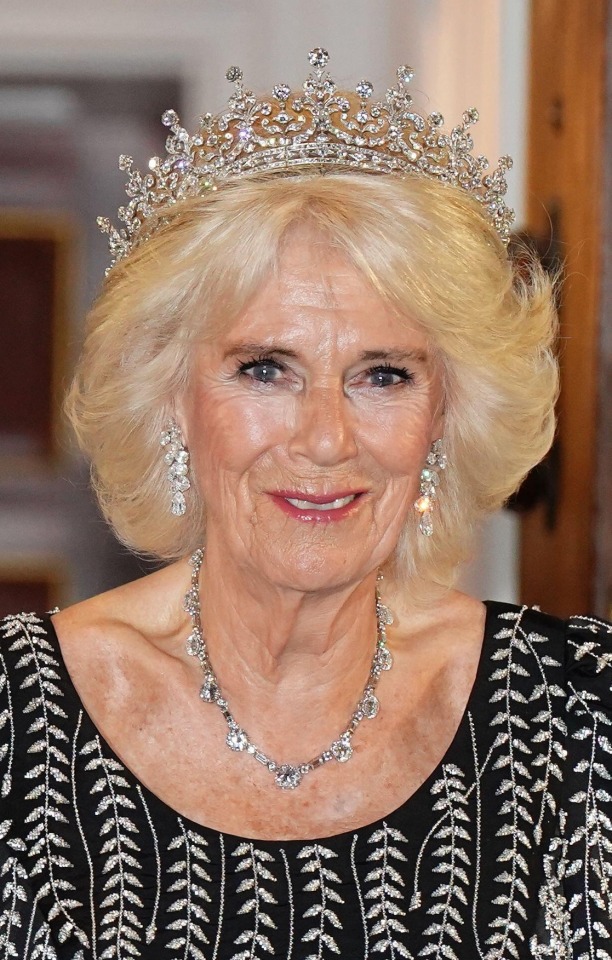
TIARA ALERT: Queen Camilla of the United Kingdom wore Queen Mary's Girls of Great Britain & Ireland Tiara for a dinner celebrating the coronation at Mansion House in London on 18 October 2023.
#Tiara Alert#Queen Camilla#United Kingdom#British Royal Family#tiara#diadem#royal jewels#Garrard#royaltyedit#I didn't know there was a tiara event tonight#and I definitely wasn't expecting Camilla to bust out the Girls
155 notes
·
View notes
Photo
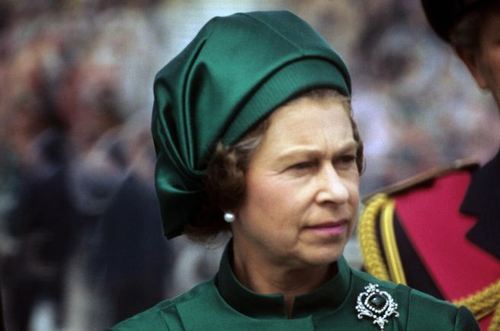
Cambridge Emerald Scroll Brooch ♕ King Charles III
#queen elizabeth#queen elizabeth ii#queen mary#mary of teck#king charles#Charles III#great britain#british royal family#royal jewels
64 notes
·
View notes
Text

DAY 1 - Favourite British Royal Family Tiara
Queen Mary's Girls of Great Britain and Ireland tiara
This tiara was a wedding present from the ‘Girls of Great Britain and Ireland’ to the Duchess of York, later Queen Mary, in 1893. It was purchased with money raised by a committee chaired by Lady Eva Greville, who became one of Queen Mary’s ladies-in-waiting. In November 1947 Queen Mary gave the tiara as a wedding present to her grand-daughter, Princess Elizabeth. The Queen has worn the tiara regularly throughout her reign and is depicted wearing it on certain issues of British and Commonwealth banknotes and coinage.
78 notes
·
View notes
Text
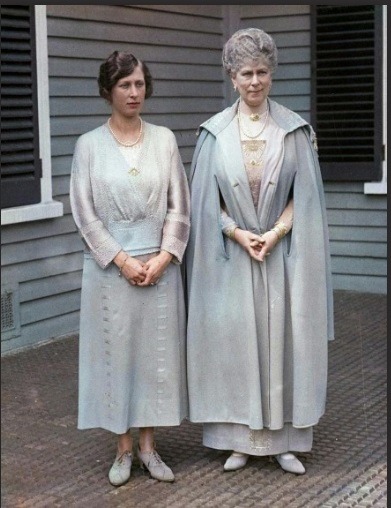
2 notes
·
View notes
Text

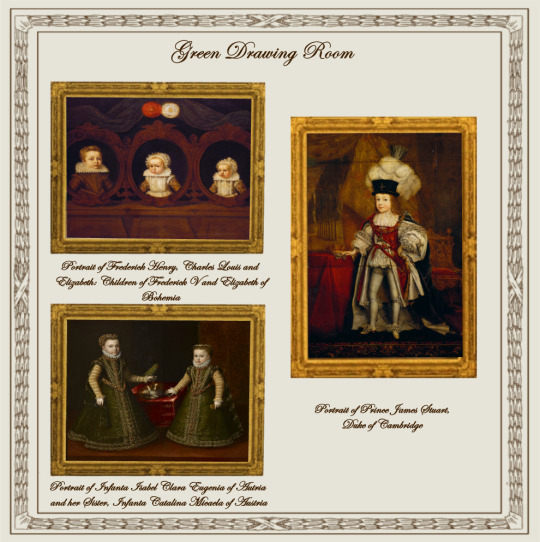
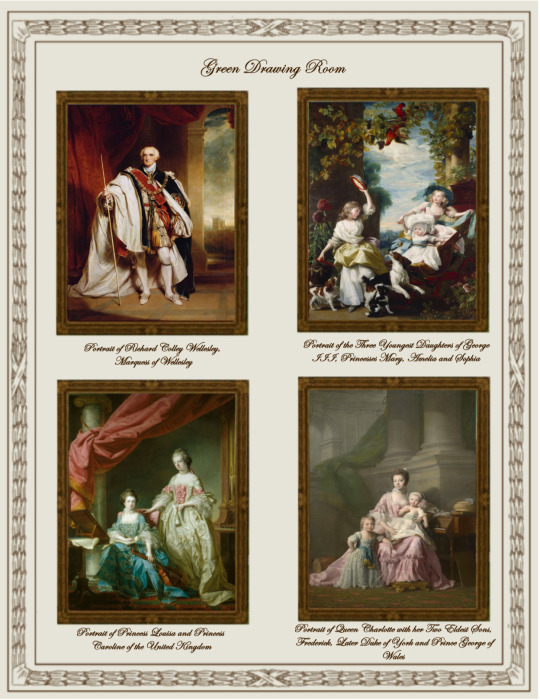
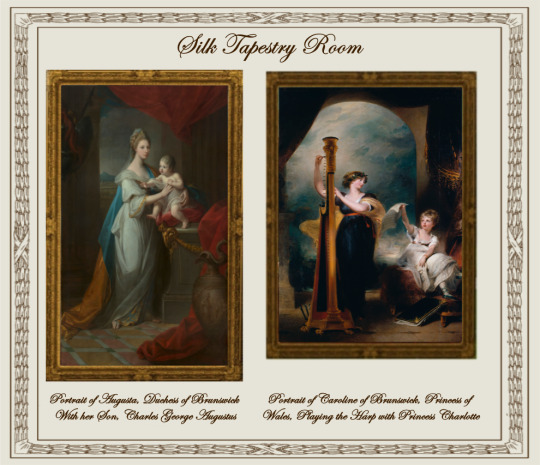
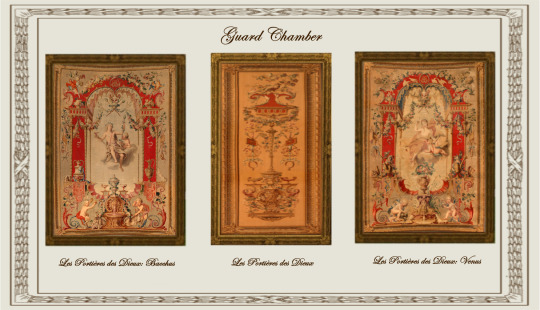

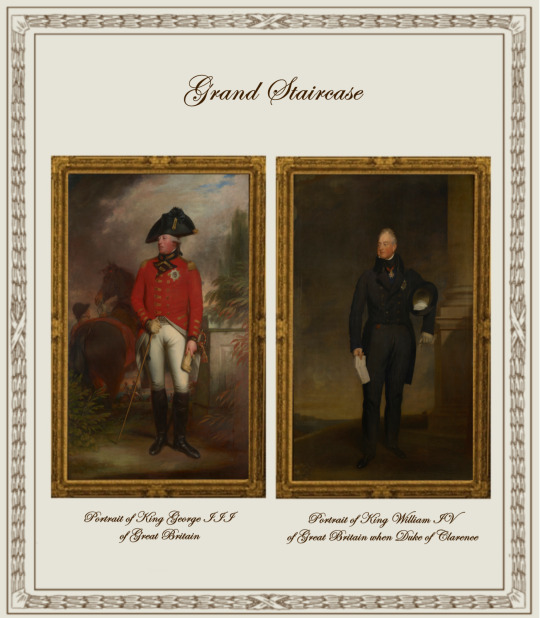
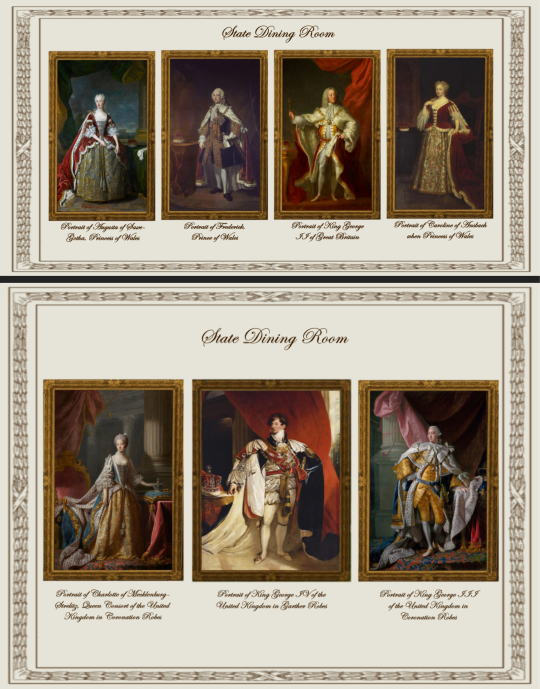
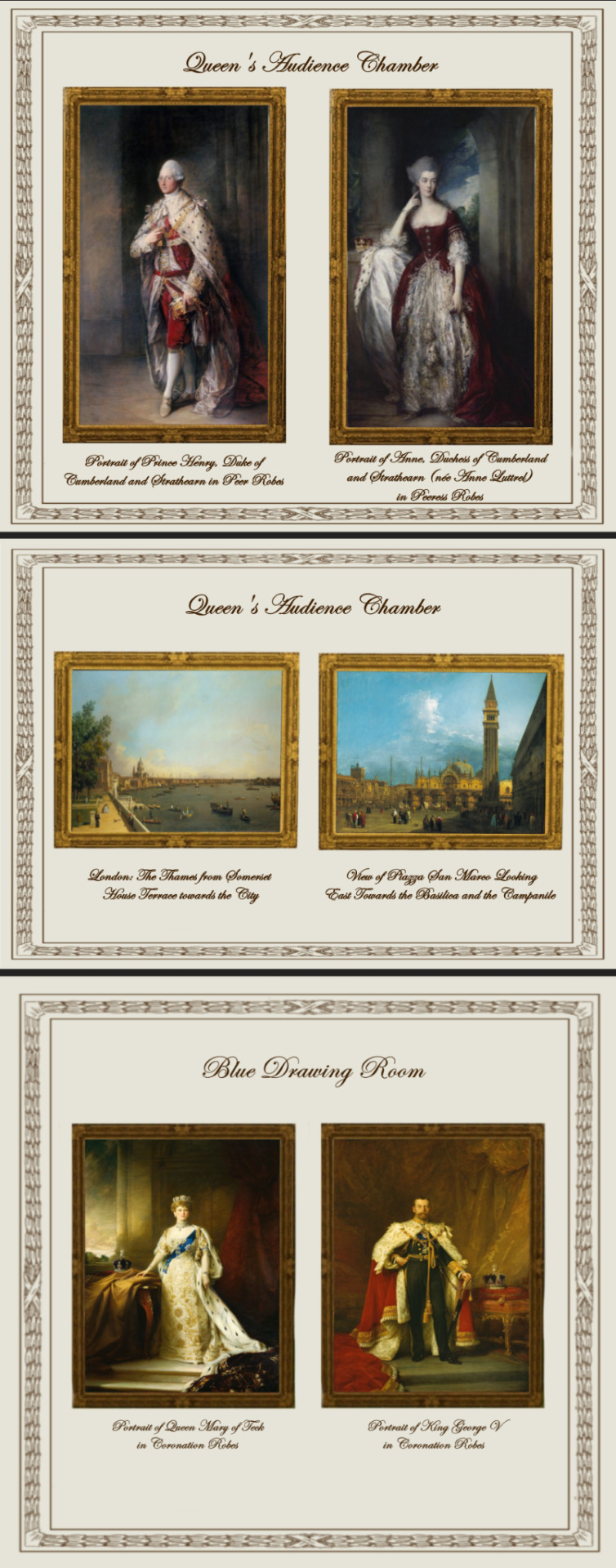
Paintings from Buckingham Palace: part I
A retexture by La Comtesse Zouboff — Original Mesh by @thejim07
100 followers gift!
First of all, I would like to thank you all for this amazing year! It's been a pleasure meeting you all and I'm beyond thankful for your support.
Spread among 13 occupied and historic royal residences in the United Kingdom, the collection is owned by King Charles III and overseen by the Royal Collection Trust. The British monarch owns some of the collection in right of the Crown and some as a private individual. It is made up of over one million objects, including 7,000 paintings, over 150,000 works on paper, this including 30,000 watercolours and drawings, and about 450,000 photographs, as well as around 700,000 works of art, including tapestries, furniture, ceramics, textiles, carriages, weapons, armour, jewellery, clocks, musical instruments, tableware, plants, manuscripts, books, and sculptures.
Some of the buildings which house the collection, such as Hampton Court Palace, are open to the public and not lived in by the Royal Family, whilst others, such as Windsor Castle, Kensington Palace and the most remarkable of them, Buckingham Palace are both residences and open to the public.
About 3,000 objects are on loan to museums throughout the world, and many others are lent on a temporary basis to exhibitions.
-------------------------------------------------------
This first part includes the paintings displayed in the White Drawing Room, the Green Drawing Room, the Silk Tapestry Room, the Guard Chamber, the Grand Staircase, the State Dining Room, the Queen's Audience Room and the Blue Drawing Room,
This set contains 37 paintings and tapestries with the original frame swatches, fully recolourable. They are:
White Drawing Room (WDR):
Portrait of François Salignan de la Mothe-Fénelon, Archbishop of Cambrai (Joseph Vivien)
Portrait of a Lady (Sir Peter Lely)
Portrait of a Man in Armour with a red scarf (Anthony van Dyck)
Portrait of Alexandra of Denmark, Queen Consort of the United Kingdom and Empress of India (François Flameng)
Green Drawing Room (GDR):
Portrait of Prince James Stuart, Duke of Cambridge (John Michael Wright)
Portrait of Frederick Henry, Charles Louis and Elizabeth: Children of Frederick V and Elizabeth of Bohemia (unknown)
Portrait of Infanta Isabel Clara Eugenia of Autria and her Sister, Infanta Catalina Micaela of Austria (Alonso Sanchez Coello)
Portrait of Princess Louisa and Princess Caroline of the United Kingdom (Francis Cotes)
Portrait of Queen Charlotte with her Two Eldest Sons, Frederick, Later Duke of York and Prince George of Wales (Allan Ramsay)
Portrait of Richard Colley Wellesley, Marquess of Wellesley (Martin Archer Shee)
Portrait of the Three Youngest Daughters of George III, Princesses Mary, Amelia and Sophia (John Singleton Copley)
Silk Tapestry Room (STR):
Portrait of Caroline of Brunswick, Princess of Wales, Playing the Harp with Princess Charlotte (Sir Thomas Lawrence)
Portrait of Augusta, Duchess of Brunswick With her Son, Charles George Augustus (Angelica Kauffmann)
Guard Chamber (GC):
Les Portières des Dieux: Bacchus (Manufacture Royale des Gobelins)
Les Portières des Dieux: Venus (Manufacture Royale des Gobelins)
Les Portières des Dieux (Manufacture Royale des Gobelins)
Grand Staircarse (GS):
Portrait of Adelaide of Saxe-Meiningen, Queen Consort of Great Britain (Martin Archer Shee)
Portrait of Augustus, Duke of Sussex (Sir David Wilkie)
Portrait of Edward, Duke of Kent (George Dawe)
Portrait of King George III of Great Britain (Sir William Beechey)
Portrait of King William IV of Great Britain when Duke of Clarence (Sir Thomas Lawrence)
Portrait of Leopold I, King of the Belgians (William Corden the Younger)
Portrait of Prince George of Cumberland, Later King George V of Hanover When a Boy (Sir Thomas Lawrence)
Portrait of Princess Charlotte Augusta of Wales (George Dawe)
Portrait of Queen Charlotte at Frogmore House (Sir William Beechey)
Portrait of Victoria of Saxe-Coburg-Saafeld, Duchess of Kent (Sir George Hayter)
State Dining Room (SDR):
Portrait of Charlotte of Mecklenburg-Strelitz, Queen Consort of the United Kingdom in Coronation Robes (Allan Ramsay)
Portrait of King George III of the United Kingdom in Coronation Robes (Allan Ramsay)
Portrait of Augusta of Saxe-Gotha, Princess of Wales (Jean-Baptiste Van Loo)
Portrait of Caroline of Ansbach when Princess of Wales (Sir Godfrey Kneller)
Portrait of Frederick, Princes of Wales (Jean-Baptiste Van Loo)
Portrait of King George II of Great Britain (John Shackleton)
Portrait of King George IV of the United Kingdom in Garther Robes (Sir Thomas Lawrence)
Queen's Audience Room (QAR):
Portrait of Anne, Duchess of Cumberland and Strathearn (née Anne Luttrel) in Peeress Robes (Sir Thomas Gainsborough)
Portrait of Prince Henry, Duke of Cumberland and Strathearn in Peer Robes (Sir Thomas Gainsborough)
London: The Thames from Somerset House Terrace towards the City (Giovanni Antonio Canal "Canaletto")
View of Piazza San Marco Looking East Towards the Basilica and the Campanile (Giovanni Antonio Canal "Canaletto")
Blue Drawing Room (BDR)
Portrait of King George V in Coronation Robes (Sir Samuel Luke Fildes)
Portrait of Queen Mary of Teck in Coronation Robes (Sir William Samuel Henry Llewellyn)
-------------------------------------------------------
Found under decor > paintings for:
500§ (WDR: 1,2 & 3)
1850§ (GDR: 1)
1960§ (GDR: 2 & 3 |QAR 3 & 4)
3040§ (STR, 1 |GC: 1 & 2|SDR: 1 & 2)
3050§ (GC:1 |GS: all 10|WDR: 4 |SDR: 3,4,5 & 6)
3560§ (QAR: 1 & 2|STR: 2)
3900§ (SDR: 7| BDR: 1 & 2|GDR: 4,5,6 & 7)
Retextured from:
"Saint Mary Magdalene" (WDR: 1,2 & 3) found here .
"The virgin of the Rosary" (GDR: 1) found here .
"The Four Cardinal Virtues" (GDR: 2&3|QAR 3 & 4) found here.
"Mariana of Austria in Prayer" (STR, 1, GC: 1 & 2|SDR: 1 & 2) found here.
"Portrait of Philip IV with a lion at his feet" (GC:1 |GS: all 10|WDR: 4 |SDR: 3,4,5 & 6) found here
"Length Portrait of Mrs.D" (QAR: 1 & 2|STR: 2) found here
"Portrait of Maria Theresa of Austria and her Son, le Grand Dauphin" (SDR: 7| BDR: 1 & 2|GDR: 4,5,6 & 7) found here
(you can just search for "Buckingham Palace" using the catalog search mod to find the entire set much easier!)
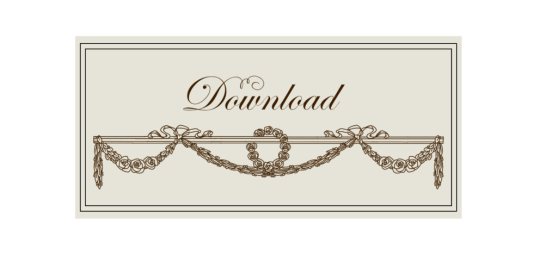
Drive
(Sims3pack | Package)
(Useful tags below)
@joojconverts @ts3history @ts3historicalccfinds @deniisu-sims @katsujiiccfinds @gifappels-stuff
-------------------------------------------------------
#the sims 3#ts3#s3cc#sims 3#sims 3 cc#sims 3 download#sims 3 decor#edwardian#rococo#baroque#renaissance#buckingham#buckingham palace#royal collection trust#wall decor
95 notes
·
View notes
Text
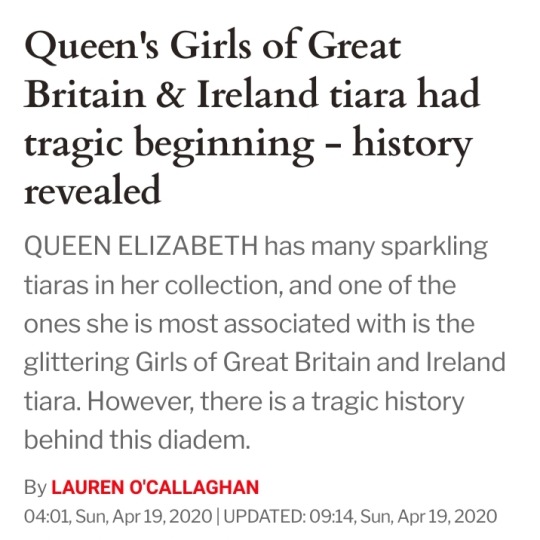


This is a tiara rooted in tragedy. Princess Mary of Teck was engaged to be married to the future king, Prince Albert Victor, Duke of Clarence & Avondale, in 1891.
But just a few weeks after the engagement was announced, he died of influenza.
His younger brother, Prince George, Duke of York, became the heir to the throne. He was also unmarried. Prince George had proposed to one of his cousins, who he was in love with, but she turned him down.
He turned his attention to Princess Mary, and she accepted. The couple were wed on 6 July 1893.
The tiara was a wedding gift to Mary. The name came from the committee of women, led by Lady Eva Greville, who raised the money for its creation.
They purchased the piece from Garrard in 1893. At Mary’s request, the remaining money from the fundraising event was sent to a fund to support widows and children of sailors who died in the HMS Victoria disaster, which killed 350.


Mary didn’t wear the piece on her wedding day - instead choosing one given to her by Queen Victoria - but it became one of her favourites. She chose it for one of her first official portraits when George ascended to the throne in 1910.
When her granddaughter Princess Elizabeth married Prince Philip in 1947, Mary decided to gift her the tiara. It is reported that the Queen still calls the diadem “Granny’s Tiara” because of this.
Like Mary before her, Elizabeth loved this item and wore it often - including one for her first public appearance after her father’s funeral.
She had chosen it for portraits and at many official events over the years, marking it as her signature tiara.
Made by Garrard, this diadem features festoon and fleur-de-lys designs. Made of diamonds set in silver and gold, the original version was topped by 14 pearls.
It also came with a second frame, allowing it to be worn as a coronet. It could also be taken off a frame entirely and worn as a necklace.
Mary tweaked the tiara in 1914, removing the top row of pearls and replacing them with 13 diamond brilliants.
The pearls found their way to the Lover’s Knot tiara instead. The base of the tiara was also removed, and Mary wore it a separate bandeau.
Elizabeth put the two pieces back together in the 1960s, which is how it remains now.
Commenting on the tiara for Express UK, James Constantinou, owner of Prestige Pawnbrokers of Channel 4’s Posh Pawn, said:
"This tiara was a wedding present from the 'Girls of Great Britain and Ireland' to the Duchess of York, later Queen Mary in 1893.
It was purchased with money raised by a committee chaired by Lady Eva Grenville who became one of Queen Mary’s ladies in waiting."

"In November 1947, Queen Mary gave the tiara as a wedding present to her granddaughter Princess Elizabeth.
The Queen has worn the tiara regularly throughout her reign. She is depicted wearing it on certain issues of British and Commonwealth banknotes and coinage.
Due to the historic attachment to Queen Mary, this spectacular piece would most likely not come onto the open market, but hypothetically, if it did, it could certainly sparkle interest of up to £20 million."

How many tiaras are there in the royal collection?
There are dozens of priceless tiaras owned by the Queen and other members of the Royal Family. Many of the British aristocracy also own tiaras, wearing them at state banquets and on wedding days.
As well as tiaras currently in existence, there are a couple which have been dismantled to make other diadems. This includes The Surrey Fringe and The Nizam of Hyderabad.
Some tiaras have formed part of iconic moments in the history of the Royal Family.
The Cartier Halo, for instance, was worn by Catherine Middleton on her wedding day to Prince William in 2011.
And it is the Lover's Knot tiara that is most often seen today, as it is a favourite of the Duchess of Cambridge.
It was closely associated with Diana, Princess of Wales, during her marriage to Prince Charles, so it holds a special significance for Catherine.
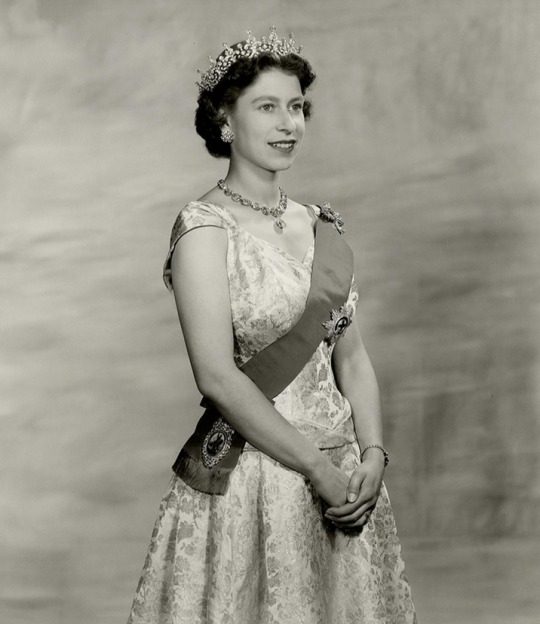

Edited
#Prince Albert Victor#Duke of Clarence & Avondale#Prince George#Duke of York#Princess Mary of Teck#British Royal Family#Lady Eva Greville#Garrard#Girls of Great Britain and Ireland Tiara#Queen Elizabeth II
41 notes
·
View notes
Text
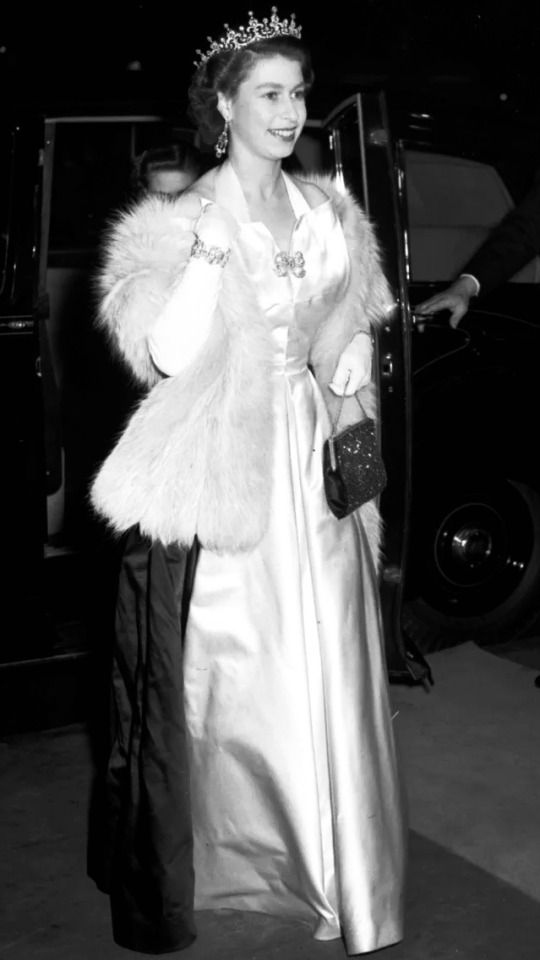



27 October 1952: The Queen wore a black and white halter neck evening dress designed by Norman Hartnell for the Royal Film Show at the Empire Theatre, Leicester Square. She also wore the Girls of Great Britain and Ireland tiara, the Greville chandelier earrings, Queen Mary’s Dorset bow brooch, and the Edinburgh wedding bracelet.
#i love everything about this look omg#the halter neck has my jaw on the floor#she ATE#queen elizabeth ii#premiere guests#norman hartnell#qeii’s outfits#brf heirlooms
110 notes
·
View notes
Text
This is random as fuck but I'm thinking about Henry's royal surname
So I happen to be a bit of nerd when it comes to British royalty, I literally don't have a reason for that except it's interesting to me
I actually really appreciated changing movie Henry's surname, until I found out they're real royal houses and started wondering about RWRB's history
In the book it was Mountchristen-Windsor, obviously modelled after irl royal family Mountbatten-Windsor, although Mountbatten was derived from the German Battenberg family from the Queen's husband, Prince Philip of Greece and Denmark, which is also an actual place in Germany. As far as I can tell Mountchristen is entirely fictional?
Book Henry mentioned having a Great Uncle who abdicated because he was a Nazi, which is irl Duke of Winsdor, Queen Elizabeth's uncle (although the reason he stated was for love), so I think? That the lineage was the same until at least that generation. But Queen Mary, Henry's grandmother said she's been serving the country for 47 years, and Princess Catherine, Henry's mother is 60 years old in 2020, born in 1960, approximately the same age as Prince Andrew, Queen E's third child. Henry was born in 1997, and Prince William was born in 1982. So the generational year gap changes there: for RWRB there's four generations, while irl there are five generations in 2020.
So a bit of math here, assuming that the Duke of Windsor's abdication is the same as the real world, which is 1936, so the lineage is the same up to 1936. The book takes place in 2020, so Queen Mary ascended to the throne in 1973, 37 years after the Duke of Windsor's abdication, a reasonable amount of years for one monarch's reign. So that monarch is where things went differently. As for how it went differently...yeah I don't fucking know my brain cells ran out.
But Movie Henry's royal family name is Hanover-Stuart, two actual houses of royalty: King James IV&I of M&G belongs to the House of Stuart (so what the fuck Nick another coincidental connection between your characters) with Anne, Queen of Britain being the last reigning monarch of the House of Stuart (after her death her cousin George of Hanover inherited the British Throne); Queen Victoria was the last reigning monarch of the House of Hanover (her children belonged to the house of her husband: the House of Saxe-Coburg and Gotha, which was later renamed Windsor during WWI). In our world, the House of Stuart went extinct in 1807, while the House of Hanover still has living members in Europe, granted no longer in direct relations to the British monarchy
So what I'm wondering if for movie verse, where the history of the British royal family changes for Henry to have this different surname:
For Hanover, it's possible that for the universe, Queen Victoria's children still bore her name of Hanover and didn't change it during the war, so the rest of the lineup to Henry kept Hanover. But I cannot for the life of me imagine where would Stuart come from given that the line broke off there
... yeah I don't know what point I'm trying to make or what conclusion I drew, but I used up an hour going down this rabbit hole. If my dad knew I was doing math for this instead of doing my calculus homework he'd kill me but whatever
Also I bet neither Casey nor Matthew actually thought this deep about such a minor thing this is how bad my rwrb brainrot is if we don't get something soon I'm gonna go stir crazy
#rwrb#red white and royal blue#rwrb movie#nicholas galitzine#henry fox mountchristen windsor#henry hanover stuart fox#firstprince#rwrb thoughts#rwrb rambles#history#british history#what the fuck is wrong with me
53 notes
·
View notes